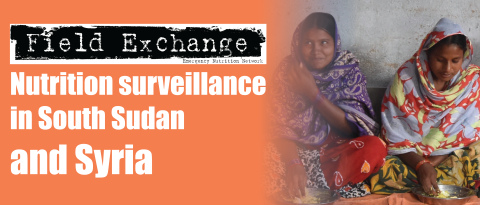Individualised breastfeeding support for acutely ill, malnourished infants under six months of age
Research snapshot1
Re-establishing exclusive breastfeeding (EBF) is the cornerstone of the 2013 World Health Organization (WHO) treatment guidelines for the management of acute malnutrition in infants under six months old. However, the guidelines are inconsistently applied, with limited evidence of outcomes in infants both in inpatient and outpatient settings and on discharge. A recent study assessed the feasibility of using breastfeeding peer supporters (BFPS) to facilitate implementation of 2013 WHO guidelines among hospitalised malnourished infants under six months old and evaluated the outcomes (EBF, infant growth, morbidity and mortality up to six weeks post-discharge) in Kilifi County Hospital, Kenya.
Between September 2016 and January 2018, three BFPS provided individual breastfeeding support to mothers of infants aged four weeks to four months admitted with an illness and acute malnutrition (mid upper-arm circumference < 11.0 cm OR weight-for-age z score (WAZ) < -2 OR weight-for-length z score (WLZ) < -2). Infants (n=51) were followed daily while in hospital, then every two weeks for six weeks after discharge.
Most enrolled mothers had multiple breastfeeding challenges, mainly relating to technique; poor positioning and attachment were observed in 78% and 76% of the mothers, respectively. Six per cent had no option to breastfeed. Delayed start to breastfeeding and perceived milk insufficiency were reported in 34% of the mothers. Almost half (43%) of the ill, malnourished infants had a history of small size at birth (low birth weight, premature or small for gestational age) and one third (35%) had a congenital malformation affecting feeding. The rate of exclusive breastfeeding was 55% on admission and 81% at discharge. At discharge, 67% of infants had attained the WHO recommended weight velocity of >5 g/kg/day for three consecutive days on breastmilk alone. Re-establishing EBF required time beyond medical recovery; extending inpatient admission to achieve feeding targets risked cross-infection. Gains in WLZ and WAZ were generally not sustained beyond two weeks after discharge.
The authors conclude that BFPS operated effectively in an inpatient setting and increased rates of exclusive breastfeeding at discharge. However, lack of sustained anthropometric gain post-discharge suggests the need for continued active intervention. Future studies need to explore integration of such support under ‘real-life’ health-service conditions and strategies for structured breastfeeding support on discharge to improve growth and ensure survival among recovering infants.
Endnotes
1Mwangome M, Murunga S, Kahindi J, et al. Individualized breastfeeding support for acutely ill, malnourished infants under 6 months old. Matern Child Nutr. 2019;e12868. https://doi.org/10.1111/mcn.12868


